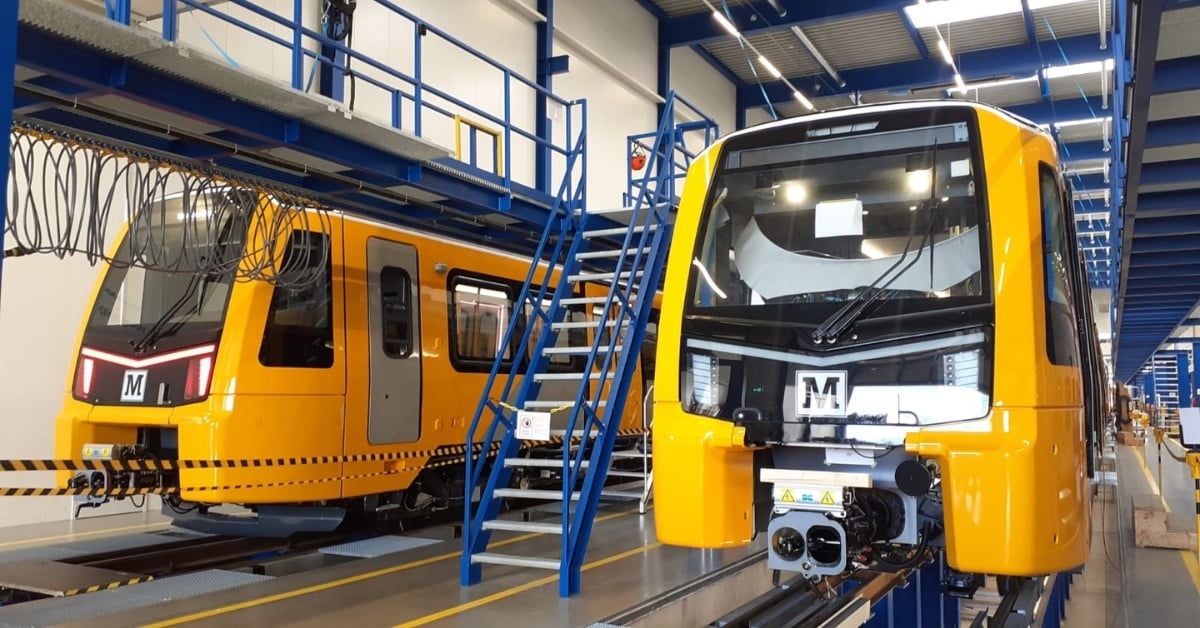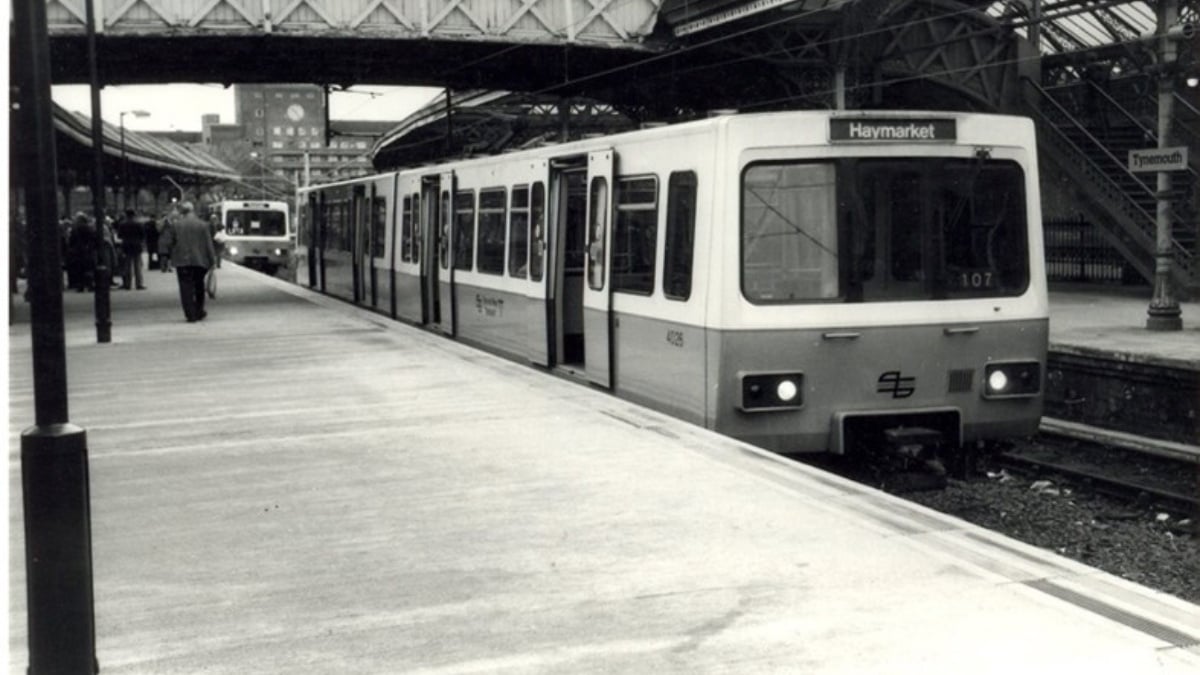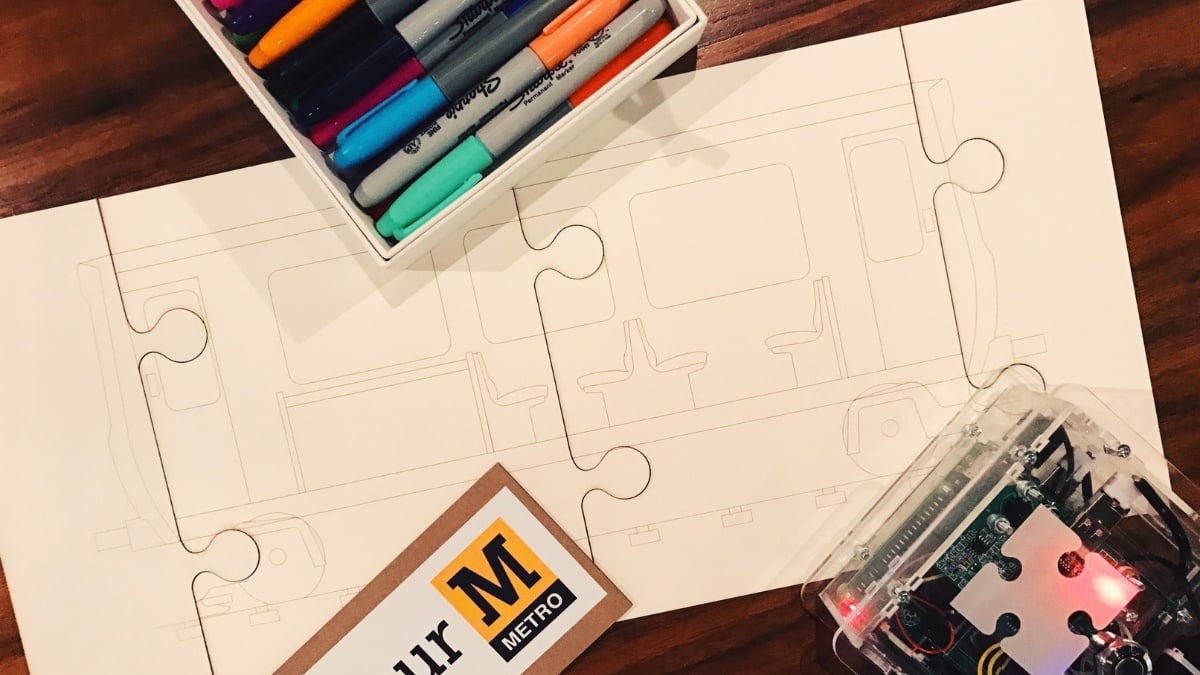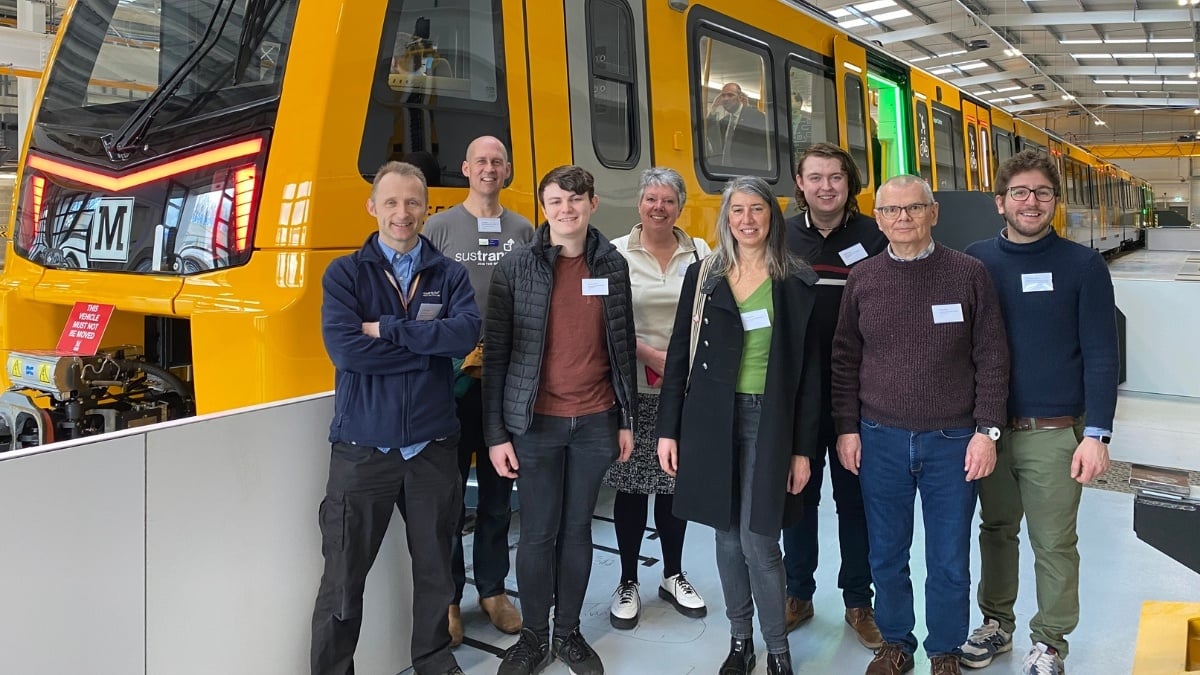Metro Futures: rethinking public transport through engagement
16 April 2025 | By: Dr Alexander Wilson | 5 min read
When we think about public transport, we often think of infrastructure. Rails, stations, carriages. But how often do we consider the people who use it?
Do you think about the spaces you inhabit while travelling between places?
The Metro Futures project – a collaboration between Newcastle University (led by Simon Bowen at Open Lab), Nexus, and Stadler – set out to change this by reimagining the Tyne and Wear Metro with the people who rely on the service to get from place to place.
This wasn't just a consultation exercise: it was an ambitious attempt to place citizens at the heart of the design of new Metro carriages. And, as we found, when you invite people to shape the future of their transport, they do so with insight, imagination, and a sense of ownership.
Dr Alexander Wilson, Lecturer in Urban Planning, writes about how the Metro Futures project is rethinking public transport design.
Contents:
- The challenge: designing a Metro for the next 40 years
- Innovation in engagement: beyond traditional consultation
- Our approach to public engagement
- Research impact: from public input to policy and design decisions
- From risk to reward: reflections on civic engagement
The challenge: designing a Metro for the next 40 years
Tyne and Wear Metro is the UK’s busiest light rail system outside London and has a significant role in people’s lives in the region, as well as being a real part of the region’s cultural identity.
The existing Metro trains have been in operation since 1980 and are starting to show their age. But designing a new fleet isn’t just about engineering; it’s about understanding what makes a transport system work for the people who use it.
This was the starting point for Metro Futures. Instead of the usual approach — where decisions are made with limited public input1 — this project sought to engage thousands of Metro users to shape the design of their future trains.
But how did we go about engaging the public?

The first passenger service left Tynemouth for Haymarket on August 11, 1980 © Nexus
Innovation in engagement: beyond traditional consultation
What set Metro Futures apart was the commitment to meaningful public collaboration across project partners and the research team. Traditional consultation exercises often suffer from limited reach, lack of depth, and a tendency to overlook marginalised voices2. We took a different approach, guided by three key principles:
- Amplifying diverse voices – Large-scale consultations often ‘average out’ concerns, marginalising specific needs. We designed our engagement to ensure that often underrepresented groups—disabled passengers, parents with prams, cyclists—had their voices heard.
- Encouraging creativity – By moving beyond tick-box surveys and fostering open discussions, we allowed people to share imaginative ideas and solutions that transport planners might not have considered.
- Positioning passengers as experts – The people who use the Metro understand its strengths and weaknesses better than anyone. By framing passengers as ‘experts of their own experiences’, we hoped to empower them to contribute in meaningful ways.
These principles underpin both phases of engagement, enabling us to capture insights that traditional methods often miss.

JigsAudio, a tool developed by Alexander Wilson to encourage people to draw and talk about the future, was used as part of Metro Futures 2016. © Alexander Wilson
Our approach to public engagement
Phase 1: Understanding passenger experience (Metro Futures 2016)
The first phase focused on gathering detailed insights from passengers about their experiences using the Metro. Through a combination of design workshops, public pop-up events, online engagement, and collaborations with schools, we spoke with nearly 4,000 people.
This phase highlighted four key concerns: accessibility, safety, comfort, and space for bikes and luggage. But more than that, it provided an opportunity for people to articulate what they loved about the Metro and what they hoped for in its future. The findings of this phase of work can be seen in the video below:
Documentary describing the findings of Metro Futures 2016 involving public 'co-researchers'
These public concerns and reflections were included in a tender (£362m) to central government, which was ultimately awarded to Swiss train manufacturer Stadler to replace the current fleet of Metro trains.
Phase 2: Testing and refining the design (Metro Futures 2020)
By early 2020, a preferred train design had been proposed based on the feedback from Metro Futures 2016. But before finalising the design, we needed to check that the new designs met passenger needs.
The outbreak of COVID-19 meant we had to rethink our engagement methods. In response, we created a highly interactive digital platform. This allowed users to explore 3D visualisations of the trains, engage in real-life scenario journeys, and provide feedback through online workshops and social media.
This digital-first approach proved to be hugely successful, attracting over 23,000 engagements: 8,298 through the website, 14,100 through social media, 53 through the workshops, and 341 through the webinars.
The feedback we received led to further refinements in the train design, ensuring that the new fleet truly reflected the needs of the people who would be using it for decades to come.
Research impact: from public input to policy and design decisions
The programme resulted in some truly impactful outcomes. This included citizen ideas and opinions being formally incorporated into the Nexus financial business case submitted to the UK Government in January 2017, and later in the design of the manufactured carriages.
Metro Futures work has attracted a great deal of public attention and accolades, including four newly commissioned works of art, funded by Arts Council England. This is the first permanent major art exhibition on public transport anywhere in the world.
There has been a series of further joint public engagement events organised between the research team and Nexus in February 2017 at the House of Lords, and at the Tyneside Cinema in Newcastle in June 2018. These events celebrated the historic place of the Metro in the life of the region and shared the results of the Metro Futures work with the public.
In March 2023, the research team also attended the public and media launch of the new fleet’s first train, christened the Class 555s. Nexus also won the 2021 Global Light Rail Awards Technical Innovation of the Year (Rolling Stock) prize, as well as three gold and one silver award from the Chartered Institute of Public Relations the Metro Futures programme.
There has also been much written about the Metro Futures project, including three academic publications in high-impact academic venues (papers at the Conference on Human Factors in Computing Systems, the International Journal of Human–Computer Interaction, and Contemporary Social Sciences: the journal of the Academy of Social Sciences, and even an article in The Conversation.

Design details of new Metro, including double grab pole, improved wheelchair area and passenger information display showing carriage occupancy. © Alan Draydon

Huw Lewis launching the new Metro Design in 2020. © Alexander Wilson

Craig Pearson, driver specialist for Metro Futures project, with Alexander Wilson © Simon Bowen

Updated glass partition design. © Simon Bowen

New Metro alongside current Metro train. © Alexander Wilson
From risk to reward: reflections on civic engagement
Metro Futures demonstrates how interdisciplinary research, universities, public authorities, and private sector partners can work together to drive meaningful change. The success of the project highlights the potential for digital tools to make engagement more inclusive, interactive, and impactful.
Importantly, it also shows that when given the opportunity, people care deeply about shaping the public services they rely on. Transport planning should not be a closed-door process. If we truly want public transport to serve the people, we must be willing to listen, collaborate, and innovate.
The Metro Futures project – being both engagement and research – posed a series of ‘what ifs’ for both Nexus and the project team.;
- What if, despite the public engagement, government funding for the new Metro fleet had not been secured?
- What if, despite a successful programme of engagement, the outcomes of the engagement were ultimately sidelined in decision-making processes?
- What if our desire for innovation engagement approaches failed to deliver meaningful understandings of people’s experiences?
- What if the manufacturers were unable to translate public input into viable design solutions?
- And more fundamentally, is it even possible to act as ‘objective’ facilitators while engaging with highly politicised, real-world infrastructure projects that are fast-moving and fraught with complexity?
These questions surfaced repeatedly throughout the project’s lifecycle, and while particular to this initiative, they resonate more broadly with the challenges and tensions that define civic-oriented social science research. The project relied on close collaboration and a strong commitment from Nexus. Genuine engagement—especially the kind that invites scrutiny—is rarely comfortable, but it’s where the most meaningful insights can emerge.
As the new Metro fleet rolls out, it will serve as a lasting testament to what can be achieved when transport users are not just consulted, but actively involved in shaping their future. And perhaps, Metro Futures is not just about new trains—it’s about long-term, sustained conversations about the future of our cities with, rather than for, the people who live in them.
With thanks to...
This project would not have been possible without the significant efforts of the Metro Futures team across Nexus, Newcastle University’s Open Lab, and Stadler: Rob Anderson, Emily Barker, Simon Bowen, Philipp Danler, Andrew Dow, Alan Dryden, Tom Feltwell, Marcel Georgii, Huw Lewis, Jennifer Manuel, Tom Nappy, Daniel Parry, Sunil Rodger, and Mark Tewdwr-Jones.

Metro Futures 2016 co-researchers at the launch of the new Metro
You might also like
- find out more about Metro Futures – Co-designing the future of Tyne and Wear Metro
- read a paper about Metro Futures 2016, Metro Futures 2020, and reflections over the entire Metro Futures programme
- read more about the author: Dr Alexander Wilson, Lecturer in Urban Planning & Degree Programme Director BA Urban Planning & MPlan
- explore Newcastle University’s School of Architecture, Planning, & Landscape
- discover how our research tackles key problems in the built environment, spanning the social sciences, humanities, creative practice, engineering, and biotechnology
- explore the work of Open Lab, offering a new perspective on interaction design and ubiquitous computing at Newcastle University
References:
1. Vigar, G. (2017). The four knowledges of transport planning: Enacting a more communicative, trans-disciplinary policy and decision-making. Transport Policy, 58, 39–45. https://doi.org/10.1016/j.tranpol.2017.04.013
2. Wilson, A., Rodger, S., Bowen, S., & Tewdwr-Jones, M. (2024). Public engagement, digital technology and transport: engaging through open, early and experience-centred perspectives at scale. Contemporary Social Science, 1–20. https://doi.org/10.1080/21582041.2024.2343880
